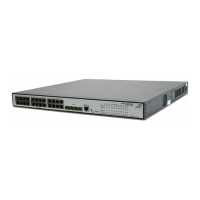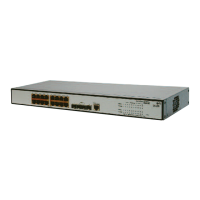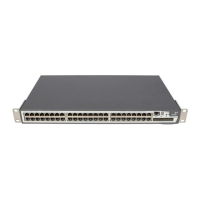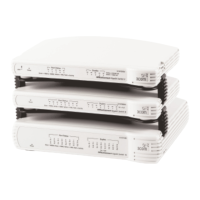Defining RMON Alarm Setups 295
■ Delta — Subtracts the last sampled value from the current value.
The difference in the values is compared to the threshold.
■ Absolute — Compares the values directly with the thresholds at
the end of the sampling interval.
■ Rising Threshold — Displays the rising counter value that triggers
the rising threshold alarm. The rising threshold is presented on top of
the graph bars. Each monitored variable is designated a color.
■ Rising Event — Displays the mechanism in which the alarms are
reported. The possible field values are:
■ LOG — Indicates there is not a saving mechanism for either the
device or in the management system. If the device is not reset, the
entry remains in the Log Table.
■ TRAP — Indicates that an SNMP trap is generated, and sent via the
Trap mechanism. The Trap can also be saved using the Trap
mechanism.
■ Both — Indicates that both the Log and Trap mechanism are used
to report alarms.
■ Falling Threshold — Displays the falling counter value that triggers
the falling threshold alarm. The falling threshold is graphically
presented on top of the graph bars. Each monitored variable is
designated a color.
■ Falling Event — Displays the mechanism in which the alarms are
reported.
■ Startup Alarm — Displays the trigger that activates the alarm
generation. Rising is defined by crossing the threshold from a
low-value threshold to a higher-value threshold.
■ Rising Alarm — Defines rising as crossing the threshold from a
low-value threshold to a higher-value threshold.
■ Falling Alarm — Defines falling as the falling counter value that
triggers the falling threshold alarm.
■ Rising and Falling Alarm — Both alarms are triggered
■ Interval — Defines the alarm interval time in seconds.
■ Owner — Displays the device or user that defined the alarm.
2 Define the fields.
3 Click . The RMON alarm is added, and the device is updated.

